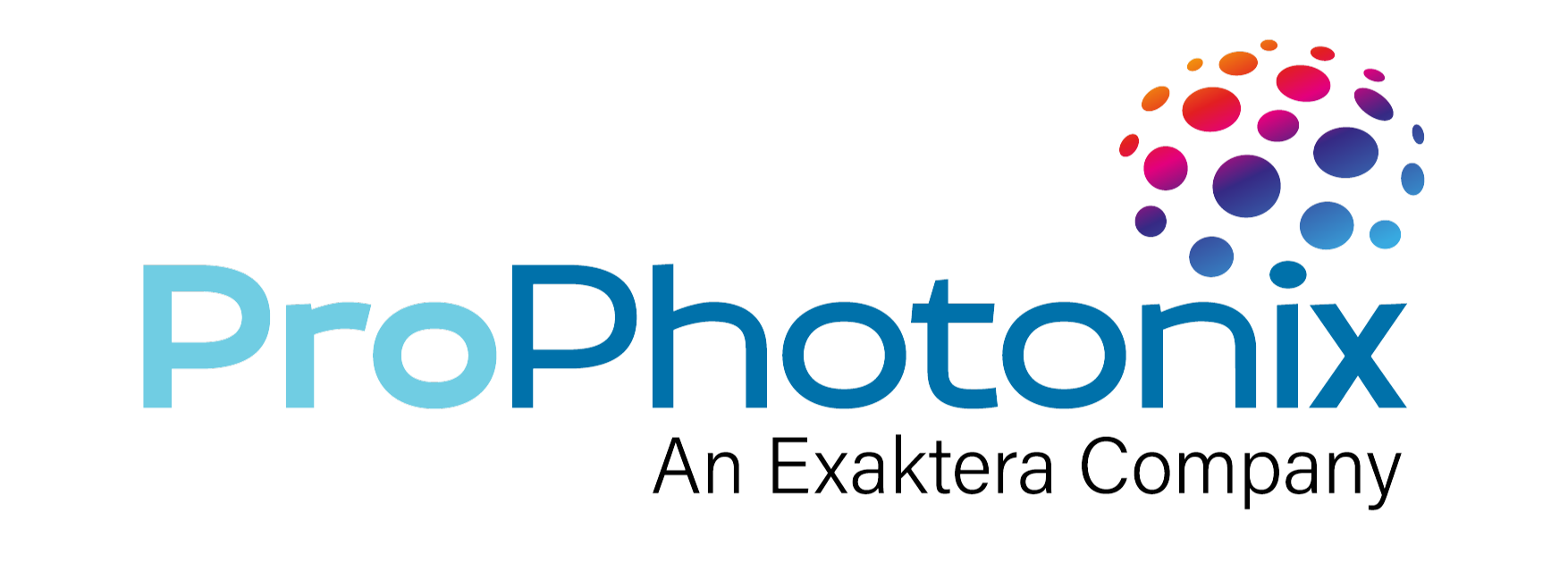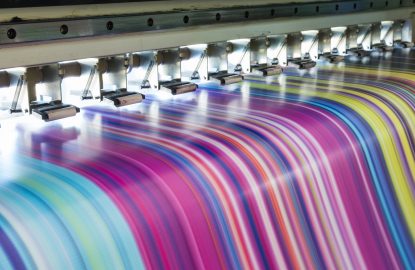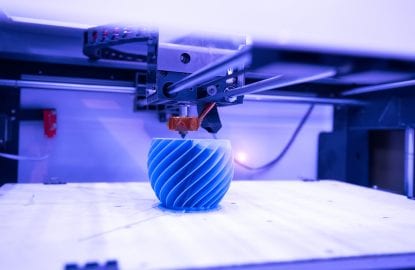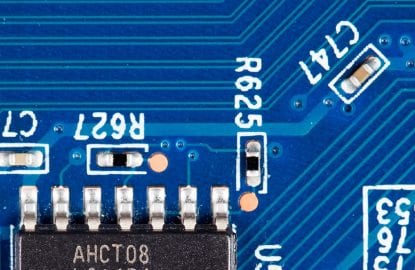UV LEDs have seen tremendous growth over the past few years, which is largely due to an increasing demand for more efficient and environmentally friendly solutions for producing UV light in contrast to mercury lamps. Due to the inherent benefits of an LED solution, UV LED curing systems have become the preferred technology in various applications, such as printing, 3D printing, coatings, and adhesives.
However, a common question often associated with UV LEDs is: do they pose any safety risks? Many misconceptions still exist concerning the safety of the materials and equipment used in UV LED curing. This blog post will serve as a guide to UV LED curing system safety measures explaining the hazards associated with UV light and recommending protective measures for a safe work environment.
Understanding the Hazards of UV Light
UV radiation is in the form of electromagnetic radiation, with wavelengths ranging from 100nm to 400nm. Based on the range, UV light can be classified as-
- UVA- ranging from 315nm to 400nm.
- UVB- ranging from 280nm to 315nm.
- UVC- ranging from 100nm to 280nm.
- UVV- ranging from 395nm to 455nm.
The optimum wavelength used for UV curing depends on several factors, but UVA is the typical wavelength range used for UV curing. UVC LEDs are a relatively new, rapidly improving technology and are predominately available from 265nm to 285nm.
Risks associated with exposure to UV light
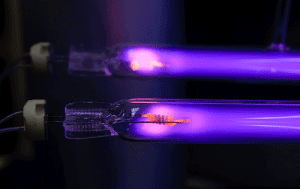
A large proportion of UV light output is not visible to the human eye and the UVA spectrum is considered the safest spectra of UV light. Overexposure to UV light can still result in poor skin and eye safety, which has been linked to accelerated skin ageing, carcinoma, melanoma, cataracts, Pterygium (or Surfer’s eye), and eye cancers. It is best to limit exposure to UV LED curing systems, which can be managed with simple precautions. Some of them are listed below-
- Don’t look directly into the UV LED light when in operation. To prevent overexposure, wear protective eyewear. We will talk more about the protective measures in the next section.
- Assume all lights are powered and invisible unless you are certain.
- Do not assume any blue or red lights are dull.
- Do not place your hands unprotected under the curing lamps.
- Be aware of what products are being used near to your workstation.
Implementing Protective Measures
UV light sources produce moderate to high levels of intensity at close range. This intensity is inversely proportional to the squared distance from the light source. To make UV LED curing a personnel-friendly manufacturing process, it is pertinent to utilize recommended safe handling procedures, industrial hygiene practices, proper worker/operator training operator and safety equipment.
Threshold Limit Values (TLVs)
The American Conference of Governmental Industrial Hygienists (ACGIH) recommends values for exposure of the eyes or skin applicable for UV radiation from fluorescent and incandescent sources, in addition to arc, gas and vapor discharges. The recommended TLV for UVA wavelength region (315 to 400 nm) should not exceed 1.0 mW/cm2 for a period greater than 1,000 seconds (approximately 16.7 minutes), and for exposure time less than 1,000 seconds, the total energy should not exceed 1.0 J/cm2.
To put this in perspective the COBRA Cure FX1, one of our lowest intensity lamps, emits 6.5 W/cm2 at 2mm, 6500 times the safe eye limit.
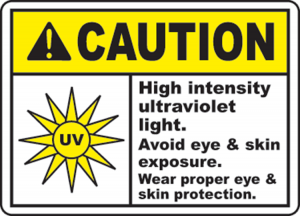
Personal Protective Equipment (PPE)
ProPhotonix recommends that personnel dealing with UV radiation should wear PPE including UV blocking eyewear and completely cover skin which may be exposed to UV light. For eye safety, these UV certified glasses are recommended based on the wavelength being used in your application.
- LG2 glasses for wavelengths 365, 385, 405
- LG3 glasses for wavelengths 365, 385, 405
- LG4 glasses for wavelengths 365
Face shields can also be used as an added layer for eye protection. Personnel working in close proximity to UV radiation sources must also wear fully buttoned lab coats, disposable nitrile or latex gloves, and closed toe shoes at all times.
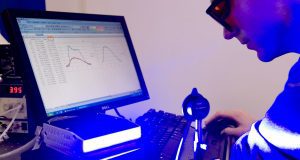
Ventilation & Shielding
In order to protect personnel working at a UV LED curing facility, the managing team must ensure that the place is completely hazard free. While ventilation is not necessary to protect the worker from UV radiation, it is needed to remove any toxic gases that may be created by the interaction of UV LED system with material being cured and atmospheric contaminants. Additionally, side and back screens should also be used to protect workers in and around the workspace.
Compliance with Safety Regulations
UV LED curing system designers should be aware of the standards for light emitting diode (LED) equipment for use in lighting products, related global safety standards, and how recent changes and new market developments impact testing and certification.
Regulatory bodies overseeing UV LED curing safety
OSHA
There is no Occupational Safety and Health Administration (OSHA) standard regarding exposure to ultraviolet light, but the OSHA general duty clause states the employer must provide a workplace free of recognized hazards that may cause death or serious physical harm.
ANSI
ANSI/UL 8750 covers LED equipment that is an integral part of a luminaire or other lighting equipment, and which operates in the visible light spectrum of 400–700 nm. The standard also applies to the component parts of LED equipment, including LED drivers, controllers, arrays, modules, and packages.
IEC
The IEC (International Electrotechnical Commission) is the world’s leading organization that prepares and publishes International Standards for all electrical, electronic and related technologies. ProPhotonix light sources are classified as Risk Group 3 under IEC 62471 at a distance of 200mm. Risk groups defined in IEC 62471:
Exempt means there is no photo-biological hazard for the end points in this standard.
- Risk Group 1 – Low Risk. Does not pose a hazard due to normal behavioral limitations on exposure.
- Risk Group 2 – Moderate Risk. Does not pose a hazard due to aversion response to very bright light sources or due to thermal discomfort.
- Risk Group 3 – High Risk. May pose a hazard even for momentary or brief exposure.
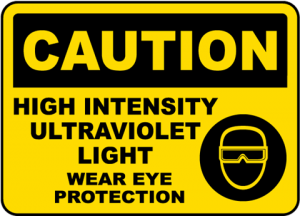
Labelling
UV LED curing systems must indicate warning labels against the UV range used and the associated risks.
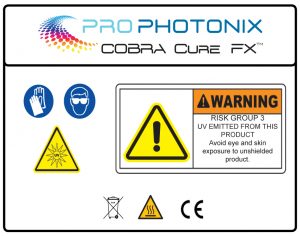
Maintenance and Inspection of UV LED Curing Systems
While UV LED curing systems provide significantly longer lifespans and lower maintenance expenses, it is crucial to conduct consistent maintenance and inspection to ensure a thriving UV curing system. These curing systems are frequently operated in less-than-ideal industrial environments, causing them to age and fail prematurely, leading to inefficient curing.
Regular inspection of UV LED lamps used in your curing solution can help detect any potential attenuation of light. Additionally, the following steps can help prevent inefficient curing and allows UV LED curing systems to function properly-
- Check for any abnormalities at regular intervals of time, fix immediately if there is any abnormality.
- Allow lamps to cool properly once the system has been turned off. This step will help extend lamp life substantially.
- Change air filters to allow maximum cooling of your UV LED curing system.
- Check LED lamps and reflectors closely for any residue or accumulated dust, use an approved cleaner and a suitable cleaning cloth or soft tissue to remove any residue.
- Blow out and clean dust on the surface, interior (working area) of the UV curing machine.
- Clean and check clamping for a firm fit. If your UV LED curing system uses a glass or quartz plate like COBRA Cure FX2, check and replace it for consistent, reliable cure.
- Maintain a regular inspection routine to avoid possible buckling of UV LED lamps in the system.
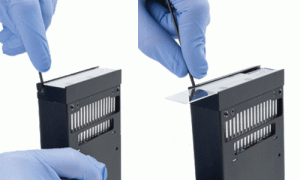
It is important to remember that for all maintenance/inspection work described above, the system must be completely disconnected from all services (electrical power, compressed air, vacuum etc.). If end users are unsure about the quality of the UV curing system’s safety equipment, they should use a UV meter/radiometer to measure stray radiant energy at the location of interest.
Conclusion
In conclusion, implementing safety measures for UV LED curing systems is not just a legal obligation, but also a moral responsibility that employers owe to their employees. It is imperative to establish comprehensive safety protocols that involve training employees, providing personal protective equipment (PPE), and installing protective barriers where applicable. As a UV LED curing solutions provider, ProPhotonix encourages the initiative to educate personnel on UV LED safety measures and advocate for their implementation in workplaces.
